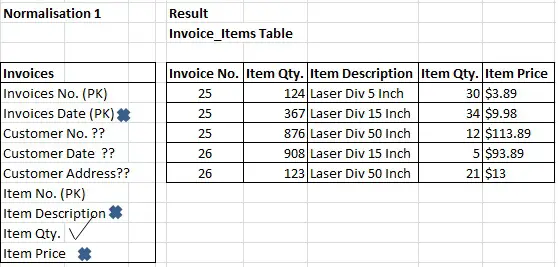Normalization pattern implemented in a scenario

Can you please suggest a normalization pattern that can be implemented in a scenario where data have the same invoice number but different information like cost, supplier etc.?













